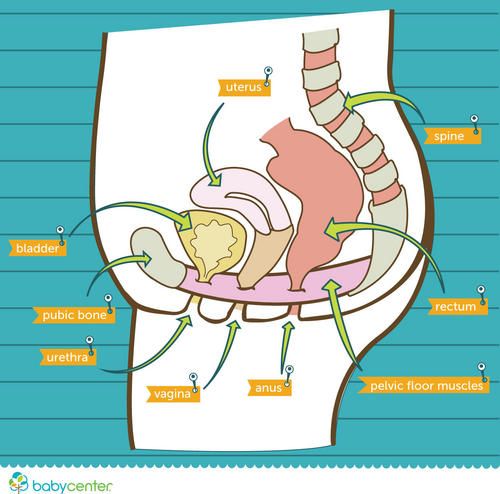We love motherhood! But we hate leaking. In fact, 1 out of 6 women experience some leaking a year after giving birth. But you don’t have to. Your belly, bottom, and back all need strengthening after childbirth. We will teach you how to strengthen your pelvic floor muscles after childbirth, how to improve your posture, and how to (finally!) exercise without leaking.
What is postpartum pelvic rehab?
Pelvic rehabilitation is a type of physical therapy that can be very helpful for post-partum moms. Pregnancy and childbirth can damage the pelvic floor muscles and connective tissue, causing all kinds of inconvenient and uncomfortable symptoms for women after they give birth.
The pelvic floor muscles stretch between the pubic bone and the tailbone and cradle your bladder, bowel, and uterus, helping you control your urine, bowel movements, and sexual functioning.
More specifically, the pelvic floor muscles enable you to keep urine and feces in – and release them – when you need to. They also help you contract and relax your vagina during sex.
When the pelvic floor muscles are tight or weak, they can cause annoying symptoms or even pain. A pelvic floor physical therapist (PT) can evaluate these muscles and determine whether they’re contributing to your symptoms.
If they are, the PT can work on the muscles and connective tissue to release trigger points – areas where the tissues are stuck together instead of sliding easily around each other. PT’s also train you to do exercises at home to help relax muscles that are tight and strengthen muscles that are weak.

Which postpartum problems can be helped by pelvic rehab?
The following conditions can be related to problems with the pelvic floor. These problems are particularly common in postpartum moms, but they can last beyond the first six months after giving birth or strike later in some women.
- Urinary difficulties. Women with urinary incontinence leak urine when they sneeze, cough, or run. Some women feel a frequent or sudden, compelling urge to pee, even when their bladder isn’t full. Others are unable to start the flow of urine at will or empty their bladder completely when urinating.
- Anal incontinence. Many postpartum women have trouble controlling gas or bowel movements.
- Perineal pain. This is common in postpartum women, especially those who tore during childbirth or are recovering from an episiotomy. (The perineum is the area of skin between the vagina and the anus.) A tight pelvic floor causes some to experience persistent perineal pain, even after their wound heals.
- Pelvic pain. Some women have pain during sex for many months or even years after childbirth. And some have chronic pain, itching, or burning in their vulva – the tissue surrounding the opening of the vagina. This can make it hard to tolerate wearing tight clothing and even underwear. Others have pain during bowel movements. These symptoms are often caused by tight pelvic floor muscles, which can lead to inflamed tissue and nerve endings.
- Pelvic organ prolapse. When pregnancy and childbirth weaken the pelvic floor muscles, one or more of the organs they support – the uterus, bladder, and bowel – can slip out of place. Rehabilitating these muscles can help prevent or improve this condition.
How do I begin pelvic rehab?
First, contact your physician or physician extender for a referral for pelvic rehab.
Then, contact the outpatient therapy location of your choice to schedule an evaluation with a physical therapist.
Connect